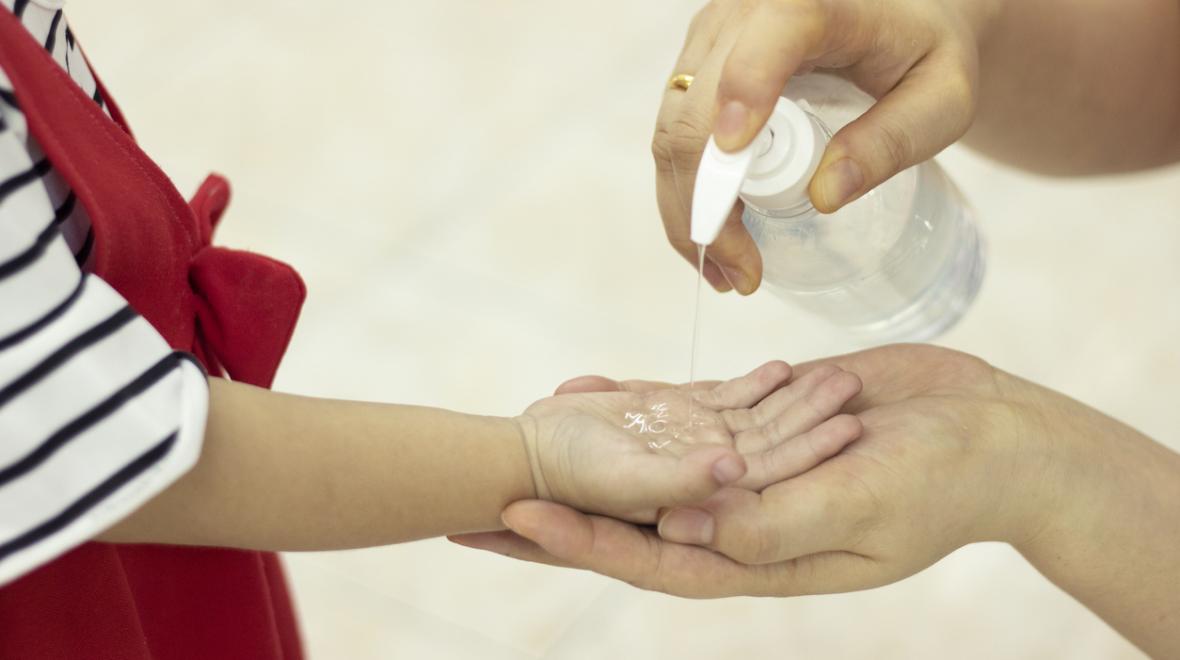
What is novel coronavirus?
Coronaviruses are not new; SARS and MERS are both coronaviruses. You may have even been infected with a coronavirus without knowing it, since some people experience mild upper respiratory symptoms or nothing at all. But COVID-19 appears to be a new, or novel, virus.
Is there good news?
For parents, yes: Like SARS and MERS, COVID-19 seems to infect adults more often than children, and symptoms in children are often unremarkable (think runny nose and mild cough). Data from thousands of coronavirus cases suggests that 80 percent of cases are mild.
Coronavirus Disease 2019 (COVID-19) Resources for Households:
- Helping Children and Teens Cope with Anxiety About COVID-19 (Seattle Children's Hospital)
- Facts About Novel Coronavirus and How to Prevent COVID-19 (The Seattle Times)
- Local Officials Announce New Recommendations to Reduce Risk of Spread of COVID-19 (Seattle and King County Public Health Insider)
- Get Your Household Ready for COVID-19 (CDC)
- Cleaning and Disinfection Recommendations (CDC)
- Preventing the Spread of COVID-19 in Homes and Residential Communities (CDC)
How to stay healthy
Start by checking for updates from reputable sources such as the CDC. Prevention recommendations for COVID-19 follow the same guidelines as for all respiratory illnesses, including covering coughs and sneezes with your elbow or sleeve, washing hands with soap and water for at least 20 seconds, using a hand sanitizer with at least 60 percent alcohol content, and staying home if you’re sick.
Create a buffer zone
Because COVID-19 is spread by droplets — the fine mist released when you cough or sneeze — you’ll want to keep your distance from anyone else’s saliva. The World Health Organization recommends maintaining a 6-foot distance from anyone who is coughing or sneezing.
Brush up on hand hygiene
We know, it’s basic, but a refresher never hurts. Remind kids to wash their hands for at least 20 seconds when they get home from school, after using the bathroom, before eating and after touching their faces. Make it fun with an appealing, kid-friendly hand soap and tunes to match: Here’s a list of songs with 20-second choruses to keep you singing at the sink.
Disinfect surfaces
Clean freaks, start your engines! The CDC recommends disinfecting high-touch surfaces such as doorknobs, light switches and toilets to prevent the spread of COVID-19 and other illnesses. Use diluted bleach or a store-bought household disinfectant to get those surfaces squeaky clean.
Know the symptoms
Right now, COVID-19 seems to be more common in males and less severe in young children, with symptoms that appear to worsen with age. Symptoms develop 2 to 14 days after exposure and often begin with a fever. According to the Journal of the American Medical Association, the most common symptoms of COVID-19 are fever, seen in up to 98 percent of patients; dry cough, seen in up to 82 percent; and fatigue, seen in up to 44 percent. Other symptoms of COVID-19 are headache, sore throat, abdominal pain and diarrhea.
What about pneumonia?
In more severe cases, COVID-19 can progress to pneumonia, leading to severe shortness of breath and painful coughing. If you or your child experiences these symptoms, seek medical help quickly.
Treat mild symptoms at home
No need to rush to the emergency room at the first sign of a sniffle. Doctors say treating mild symptoms at home is the safest approach, since spending time in a crowded hospital or clinic may expose you, your child or others to illness. Because there’s currently no FDA-approved antiviral drug for COVID-19, your health-care provider won’t be able to offer a quick cure, anyway.
Getting tested
Tests for COVID-19 are performed at hospitals and clinics, but they’re being limited to people with severe symptoms or those who have traveled to a restricted area. Soon, tests should be more widely available, according to a March 4 CDC announcement. If symptoms progress, keep this hotline handy and call your health-care provider to ask about testing.
If you’re sick
Because the virus spreads via close contact with others, staying home, coughing into your elbow or sleeve instead of your hands, and avoiding public spaces helps protect others. Stay in one room of your home and use a separate bathroom, if possible. It may be possible to spread the virus even if you’re not showing symptoms, so those with coronavirus are advised to stay home for 14 days.
Keep pets away
Coronaviruses can pass between animals and people, per the WHO. Since experts are still learning about how COVID-19 spreads, those who are ill should avoid contact with people and pets.
Is breastfeeding safe?
The virus does not appear to be transmitted through breast milk, per the CDC. The CDC recommends that breastfeeding parents continue to do so, because breast milk provides protection against illness. Adults who are ill should take precautions to avoid spreading the virus to a breastfeeding child with careful hand hygiene and other preventative measures.
What to do about travel
Plan on postponing non-essential travel to countries with active travel restrictions, currently China, Iran, South Korea, Italy and Japan. Check the CDC’s recommendations for travelers for updates to travel advisories.
How to prepare long-term
The Red Cross recommends approaching this outbreak like you’d approach any other emergency. Keep a supply of household goods on hand, such as cleaning supplies, laundry detergent and diapers. Make sure that prescriptions are filled (it’s probably not necessary to get more than a month’s supply) and have a plan in place to care for elderly relatives.
How to talk to kids
Your kids probably have questions about coronavirus and may have heard scary myths about its origin, symptoms and fatality rate. Calm kids’ fears by keeping the discussion centered on facts. This short myth-busting video is a great place to start. Seattle Children's Hospital has also created a guide for helping kids and teens cope with their anxiety about COVID-19.
If they’re bored
So far, Washington’s COVID-19-related school closures have been minimal and brief, but experts advise caregivers to prepare to keep kids at home if needed. Here’s a roundup of indoor activities to keep preschoolers busy. Enlist the kids in a little spring cleaning, or take the opportunity to plan a family movie day or night with this list of the best family movies to stream.
And unless you or your child is ill, staying home doesn’t necessarily mean staying inside — enjoying your own back yard or taking a walk around the block can offer a much-needed dose of calm in the midst of COVID-19 chaos.











